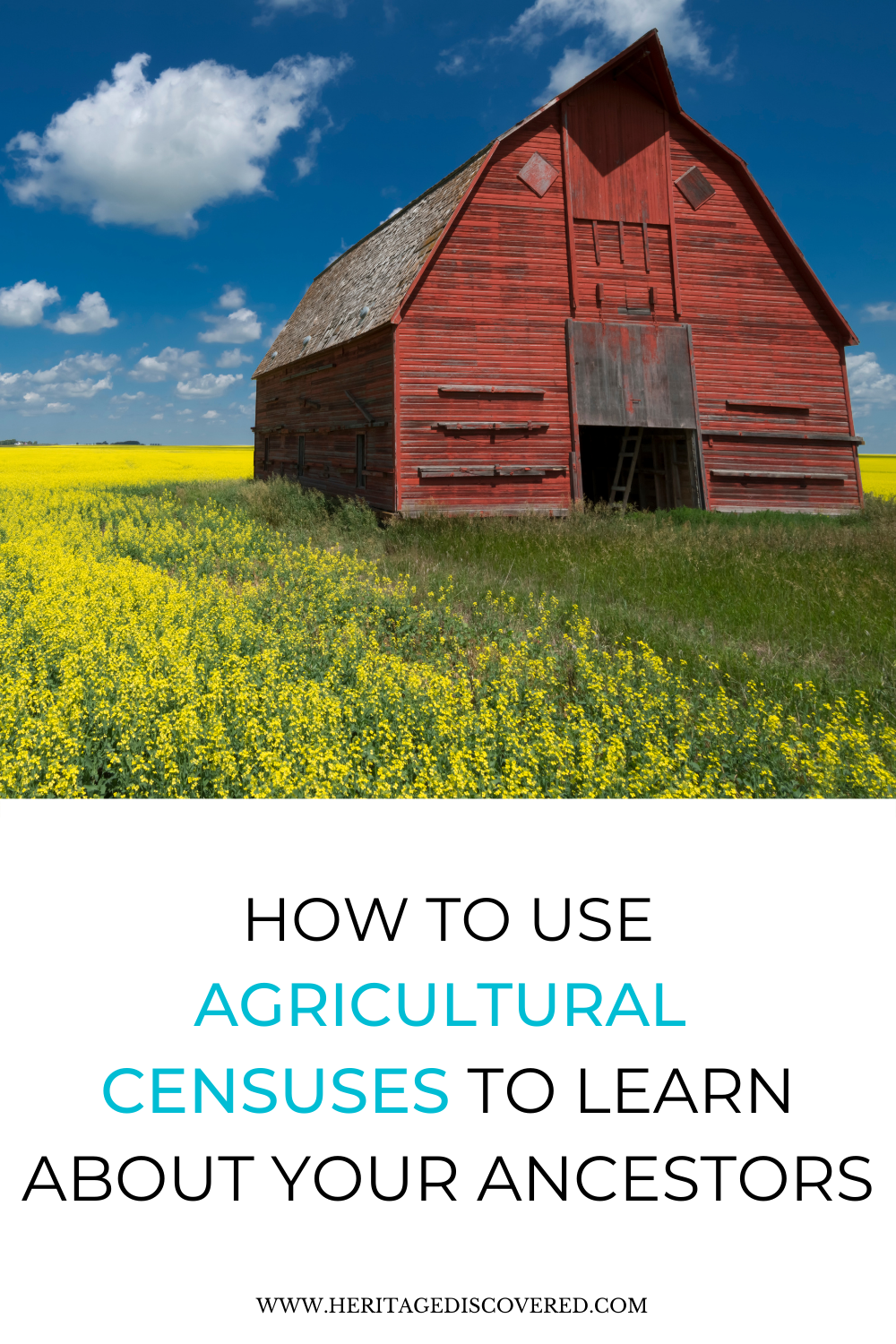How to Use Agricultural Censuses in Genealogy
All genealogists use the population schedules, also known as the census, in their family tree research. The decennial census helps us to find our ancestors’ names, ages, where they were living, their children’s names, when they immigrated, and much more.
But did you know that there are non-population schedules on a variety of topics also available for your genealogy research? These complement the decennial population census with different information. One of these is the agricultural schedule.
What is the agricultural census?
Asking agriculture-related questions began in 1820 as part of the population census to learn how many Americans were in farming. By 1840, a separate agriculture census was created. It was also taken every 10 years.
The agricultural schedules of 1850, 1860, 1870, and 1880 are available for research. These tell us the name of the owner or manager of the farm, the number of improved and unimproved acres, and how many livestock were owned by animal, like horses, cows, and sheep. Information on the goods produced the year before by crop, such as bushels of wheat, rye, or Indian corn, and pounds of tobacco, wool, or gallons of wine (!) is also included.
The schedules also offer information on the value of the farm, its equipment and livestock, and the number of animals killed in the past year. In 1880, new questions were added on the numbers of acres used for each crop, number of poultry, and the number of eggs produced. Even how much beeswax, honey, and molasses they produced was recorded. Smaller farms were not always included in the agricultural census.
Unfortunately, the agricultural schedules are not all digitized, or even indexed. They’re also not available for all states or counties. But, they’re still worth looking for. Ancestry has some schedules available online. FamilySearch also has agriculture schedules available for some states. To find them, search the catalog by place and look for non-population schedules in the census results. Some schedules are available through local archives. Visit the National Archives to see what's available for the state you’re researching.
How to use the agricultural censuses in your genealogy research
If you had an ancestor who was a farmer, the agricultural censuses can add to what you know about them for a given time and place. They can also give you an idea of how wealthy they may have been through the size and value of their farm and how much livestock they owned. If they were recorded in more than one agricultural schedule, you can see how their farm grew or shrank over time. You can learn details about what crops they cultivated and animals they raised.
For example, Samuel C. Bacon of Snachwine Township, Putnam County, Illinois was the wealthiest person on this page by far, with a farm cash value of $15,900 in 1860 – about $500,000 in today’s dollars. He owned 31 horses, 10 cows, and 40 other cattle, with a value of $1840. He also had a huge farm of almost 800 acres.
The agricultural censuses can also help you locate an ancestor if you can’t find them in the population schedule for that decade. They tell you if your ancestor owned land, which could lead you to deeds, tax lists, and other documents. They also give an alternative resource to learning about their wealth and property if you can’t find a land deed or tax lists.
The enumerators, or census takers, had specific instructions on how to fill out each question for each schedule. If you have questions about what you find, you can check the instructions to see which rules they followed for each year.
I found one of my ancestors, William Slattery, in the 1880 agricultural schedule for Whately, Franklin County, Massachusetts. Although he had only 6 acres of land – two of which were potatoes – and one milch (milk) cow, he was an immigrant from Ireland, and he was doing better than some of my other ancestors!
Have you used the agricultural schedules in your genealogy research? If so, what did you learn about your ancestors?



